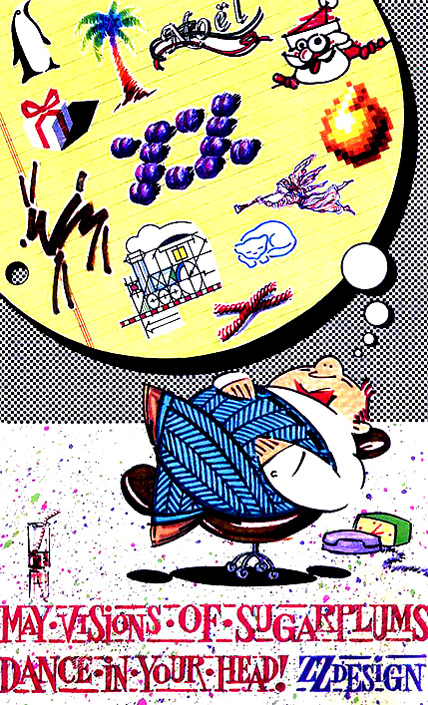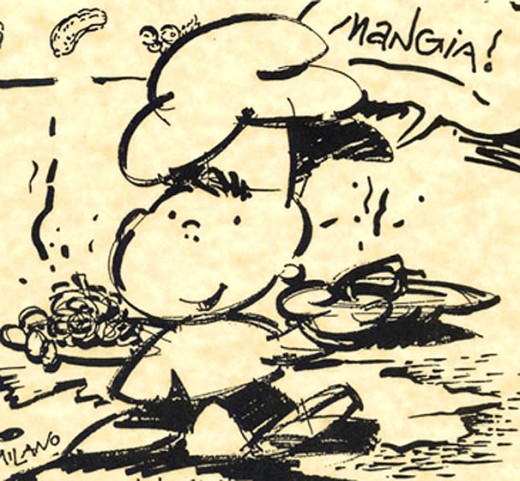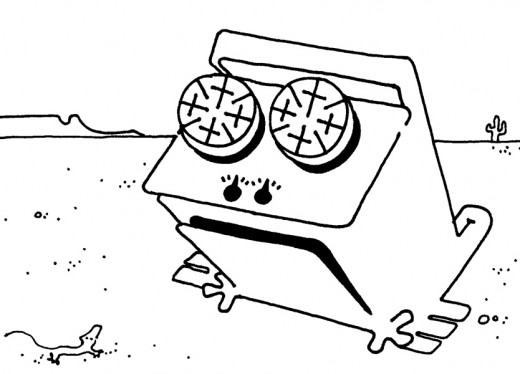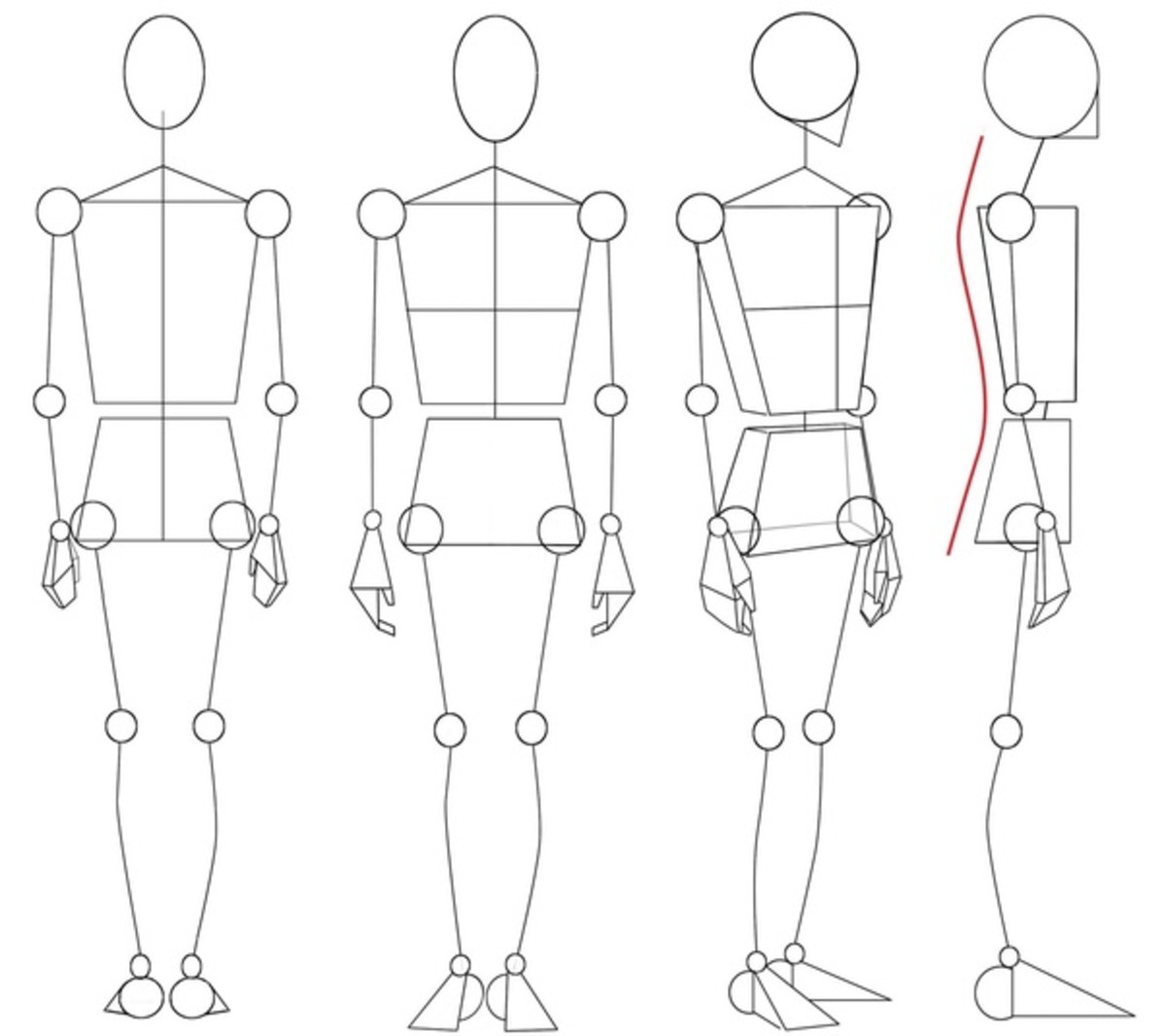- HubPages»
- Arts and Design»
- Drawing»
- Drawing Tutorials
Start Cartooning!

Always thought of yourself as the next Charles Schulz or Gary Larsen? Wish you could turn out a manga or animé book? Love to see your animated special on TV or at the movies some day? Then come along, while this cartoonist gives you some tips on how to get started.
To be a successful cartoonist, you'll probably want to initially develop your drawing skills (though there are certainly well known examples of the decidedly draftingly challenged who have made it big). You might first want to cast about for another piece I've written on learning to draw and sketch. Or you could certainly refer to all sorts of other drawing sources or guides, or subscribe to lessons at your local school or arts center. But for purposes of this discussion, I'm going to assume you have at least some rudimentary drawing ability, and simply build on that.

You can begin practicing with simple figures of the sort shown above, as it incorporates many of the most basic rules of cartooning. The First Rule is: draw what you know. You can no more cartoon than you can draw something you don't understand, so get to know your subject matter. (When Disney animators undertook Lion King, they began by spending countless hours viewing live lions at zoos to insure that their animated counterparts would be believable.) Of course, most of us know what people look like, so for the image above, I chose a chef. However, do you know what a chef's toque is, and what a real one looks like? Can you draw a believable pickle, like the one hovering over his right shoulder? Familiarize yourself with your subject matter and not only will your cartoons improve, but you'll know more about those telling details that lend more credibility to your drawings.
Second Rule: simplify! Notice how my little chef has no neck and no definable waist. His hands are also each missing a finger, while his ears have no detail whatsoever. When you cartoon, you are attempting to convey a lot of information and emotion and attitude with a limited number of lines, so you must eliminate as much extraneous detail as possible, leaving behind only what advances your cartoon's 'story'. Heads and torso, hands and feet all become egg-shaped or flattened discs, legs and arms become bendy pipes, joints are implied rather than drawn, and proportions get distorted. Heads become huge in relation to bodies, because that affords more room for facial expressions, and less for tedious clothing detail. And, so on. Also learn when the addition of a selective detail or two will really help 'sell' your story. For example, in the illustration at the top of this article, the entire concept of someone dreaming on the job is sold by the rotund fellow's herringbone pants, bow tie, phone and desk chair, though those details might at first seem to be peripheral to the main image of the dream cloud overhead.
You'll find much more to enjoy (and emulate) at rickzworld.

Third Rule: develop motion, emotion and attitude in your drawings. Note how each of the three illustrations I've shown you so far has its own particular attitude, emotion or mood, and how elements of each (the tilting desk chair, the steaming pasta, the smiling mouse) almost appear to be moving. Artists sometime refer to this effect as the 'lyrical line' — the line that flows and plays its own little tune. Practice your drawing, sketching and doodling until each line begins to assume a bit of visual character and personality all its own. Charles Schulz wisely discontinued the creation and drawing of new comic strips of his famed Peanuts gang shortly before his death, realizing that no one could ever faithfully imitate or replicate the very precise and particular linework that made Charlie Brown, Snoopy and pals come to life. Study such classic comics as Krazy Kat, Calvin & Hobbes, Pogo, and others, to see the richness and variety of linework, shading and drawing style possible.
Fourth Rule: don't get stuck in a rut. As my three illustrations also show, and as any cursory scanning of your local paper's funny pages will confirm, you can draw comics in just about any style or character you desire. Some styles work better for some subject matter; others work better for other topics. You'll also need to find your groove — what might work best for you. So, experiment. Stretch the boundaries of what and how you are able to draw. If manga is what you want to draw, study and practice the manga art of others. If Dr. Seuss is your favorite humor illustrator, then practice drawing as he does, until you find your own particular path.

Fifth rule: develop humor and whimsy. The most common application of cartoons and comics is as humor, or at least as whimsical, fanciful or fantastic representation of reality (or unreality). Cartoons and comics must therefore almost always embody some form of humor or whimsy, even if it be ironic, sardonic or black (bleak) humor. To develop the humor and whimsy in your drawings, give yourself practice assignments. Perhaps: try to draw a hilarious automobile. Or: see if you can sketch an ironic zucchini. Maybe: attempt to doodle two cows laughing over a joke. As you practice, you'll develop the ability to create whimsical compositions and humorous settings. In the cartoon capping this article, humor is embodied in the desk chair almost toppling over backward, and by the half-drunk glass of iced tea awaiting nap's end. Whimsy occupies the little chef's expressive 'Mangia' and the constant rolling motion of the linework of his body, toque, hands and platters. All of Mickey tilts and lunges forward happily, with mouth wide agape.
Sixth Rule: use color to sell your story (even if it's only black and white). Pictured below is a quizzically confused Santa, and what tells us that is not just his outstretched arms and his 'What gives?' type of expression. The vibrant colors add whimsy, and a sense of hyper-reality that makes us accept this Santa as somehow having a genuine reaction, even though he is clearly not 'real'. The tale of my monochromatic chef above is also reinforced through color. The bold thick swooshes juxtaposed against thinner sketch lines make him seemingly jiggle about and jump to life. The rich black shadows pop him off the page at the viewer.

Seventh Rule: don't stop drawing. Many of the world's best cartoonists only got there through years of struggle. Many more cartoonists struggle outside the limelight, yet make fairly good careers out of comics and comic illustration for a whole host of applications in the media, business, consumer goods, packaging, children's books, etc. As you practice and work, your cartoons will continue to improve, and you'll always have them to present as you are interviewed for that next job or project or book assignment.

- How to Draw (Sketch)
There are those who feel they can't draw a straight line to save their lives. Others think they have no talent for art at all. - You Can Caricature!
If you've got the will and the desire, you can caricature! - Create an Architectural Rendering
Come create this rendering along with me! - Postage Stamp Art the World Over
Just how much do you really know about that few square inches or less of gummed colored paper you've stuck to the corners of envelopes for years? - Using an Architect
Here's what you need to know about what an architect can do for you, and how best to benefit from architectural services. - How to Use Mind Over Matter
Things seem too tough to manage? Read on! by rlz Ever wonder how Einstein came up with the theory of relativity? Have you wished for a ‘Eureka!’ moment like Archimedes, settling into his bath? Tired of all the other guys and gals getting the... - Designing Parking Lots
With virtual seas of asphalt seeming to stretch from horizon to horizon, some would say we have sacrificed far too much of our world to the automobile. But the effective design of parking lots is essential to the proper functioning of 21st Century...








